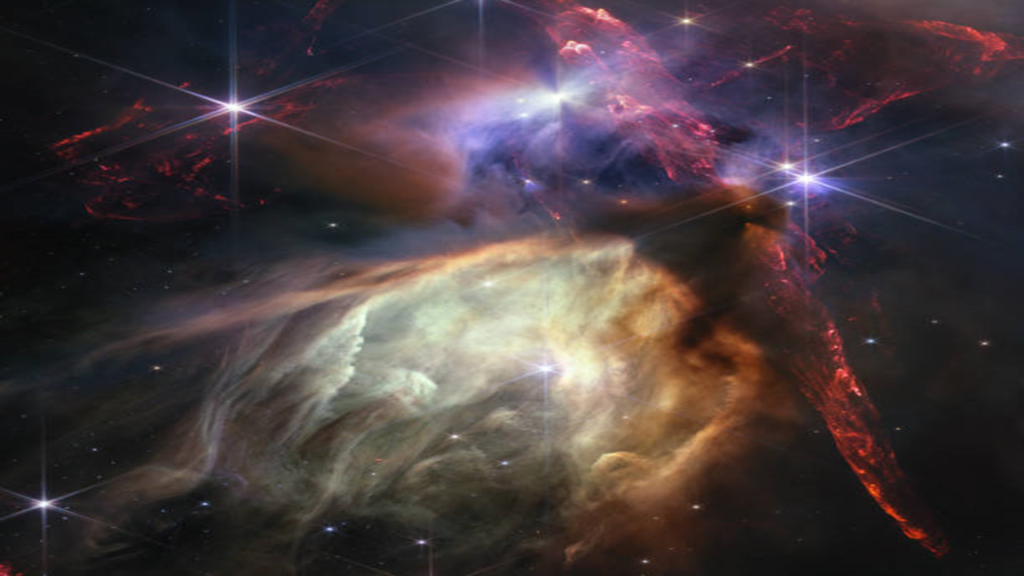Curious about our Sun’s early days? NASA’s James Webb Space Telescope provides a glimpse into the Sun’s past by capturing a spectacular image of what might have been its doppelgänger in its early stages.
The celestial snapshot, released on September 14, showcases Herbig-Haro 211 (HH 211), a young star deemed by NASA as a “youthful counterpart to our Sun.” Nestled in the constellation Perseus, about 1,000 light-years away from Earth, HH 211 presently possesses only 8% of the Sun’s mass. However, its designation as a Class 0 protostar, signifying it’s under 100,000 years old, indicates that it is on its way to maturing into a Sun-like star.

NASA;
The image is a brilliant play of colors with vibrant hues of blue and pink, radiating from a shadowed core. This radiance originates from the region surrounding the emerging star, a phenomenon recognized as a Herbig-Haro object. As HH 211 releases gas jets, they clash with the adjacent gas and dust, crafting the vibrant glow captured in the image. One enthusiastic observer humorously likened the scene to “stretching after a nap.”
Another viewer quipped, likening the brilliant outflow to a “beam from a futuristic particle gun.”
NASA emphasizes the inherent challenge in capturing images of such nascent stars. They often remain cloaked within the dense gas of the molecular clouds they were birthed from. However, the James Webb Space Telescope’s advanced infrared capabilities break through these barriers, offering us a front-row seat to these cosmic wonders.





